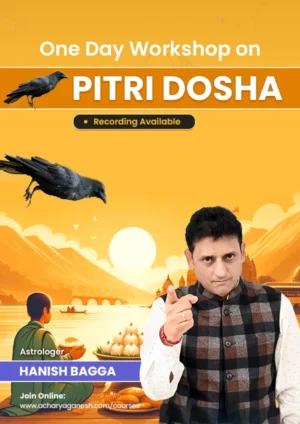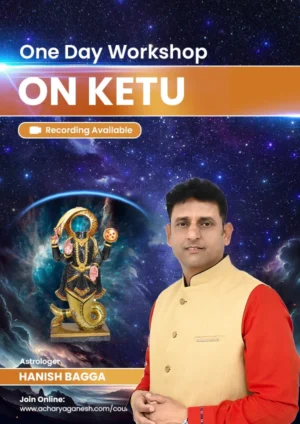Introduction to Sage Jamadagni:
Sage Jamadagni is one of the Saptarishies of the Hindu Vedic period. According to the Hindu Vedic mythology, Jamdagni Rishi is of the lineage of Bhrigu who is one of the Prajapatis, created by Lord Brahma.
Sage Jamadagni played a key role in nurturing Vedic Literature by composing hymns. The alternate names and titles of Sage Jamadagni include Jamadagni Muni, Jamadagni Rishi, Jamadagni Maharishi, and Jamadagni Acharya.
Jamadagni History is replete with numerous anecdotes and Jamdagni legends. One of the Jamdagni Stories relates to the divine cow, Kamdhenu which is worthy enough to provide milk and food in abundance.
Jamdagni Legend goes that the King of Haihaya, Mahismati named Kartavirya Arjuna, wished to own the Kamdhenu cow belonging to Sage Jamadagni. To fulfill his wish, King Kartavirya Arjuna deputed Chandragupta, his Minister to purchase the divine cow from Jamdagni Sage.
But Jamdagini Sage declined the offer and at this, Chandragupta, the Minister became furious and forcefully took Kamdhenu, with him to the Mahismati town of King Kartavirya Arjuna.
Jamadagni’s Significance and Jamadagni Influence can be judged by the fact that he is a descendant of the renowned Sage Bhrigu, who is none other but one of the Prajapatis created by Lord Brahma himself.
Jamdagini’s Significance and Jamdagini influence can also be judged by the fact that he is the father of the popular Sage Parashuram.
Jamadagni Significance and Jamadagni Influence was to such an extent that his power of knowledge and wisdom was famous amongst the various Kingdoms.
Overview of Sage Jamadagni:
As an overview of Sage Jamadagni’s identity and historical background, it is noted that Jamadagni Muni is called by different names and titles such as Jamadagni Rishi or the Jamadagni Maharishi or the Jamadagni Acharya.
According to the Jamadagni mythology, the Jamadagni Rishi, or Jamadagni Muni was born to Sage Richika and his wife Satyawati. According to Jamadagni Biography and Jamadagni Background as narrated in the Bhagavata Purana, his father, Sage Richika was directed by King Gadhi to bring 1000 white horses with black ears to marry Satyavati. Sage Richika, with the help of Varuna, was able to bring 1000 white horses with black ears and thereafter, King Gadhi permitted the solemnization of the marriage of Sage Richika and Princess Satyavati.
As per the mythological legend, relating to Jamadagni’s Biography, Satyawati and her mother, sought blessings from Sage Richika for having a son. At this, the Sage Richika made two packets of milk-boiled rice for each of them. One with Brahma Mantra was meant for Satyavati and the other with Ksatra Mantra for his mother-in-law.
As per Jamadagni Maharishi’s biography, Satyavati’s mother got it swapped. Learning about the swapping of the packets of milk-boiled rice, Richika predicted that the son born to his mother-in-law would be a great Brahmana but his son would be an aggressive warrior.
Learning about this prediction, Satyavati prayed to amend this outcome. As per Jamadagni’s Background, Sage Jamdagini, or Jamadagni Acharya was born to Satyavati and Sage Richika. Jamdagini’s son was named Parsuram, a warrior.
At the same time, King Gadhi’s wife(Mother-in-law of Sage Richika) was blessed with a son named Kaushika, who later came to be known as Viswamitra, who was a Kshatriya by birth but later acquired the stature of a Brahmarishi.
Significance and Influence:
Jamadagni Munis is one of the Saptarishis born in the family of Sage Brighu who was one of the Prajapatis created by Lord Brahma, the Creator. Jamadagni’s contributions to Vedic literature are immense.
He recited the hymns of the Vedas and had extraordinary talent, wisdom, and knowledge of Sanskrit literature and Vedic philosophy. He was an erudite scholar of Vedas. Jamadagni(जमदग्नि) did not have any formal teachings from guru except for the teachings from his father, Sage Richika.
According to the Jamadagni Legends, Sage Jamadagni was the Son of Satyavatī (daughter of king Gādhi) and sage Ṛichika. He married Reṇukā, the daughter of Reṇu, and had 5 sons, the eldest being Vasuman and the youngest was Parasurama.
Jamadagni’s influence is echoed through the Jamadagni legends about his firing several arrows into the sky against the Sun God for causing excessive heat. Surya then appeared before the Jamdagini Rishi as a Brahmin and gave him solace by offering sandals and shades from the scorching heat.
Jamadagni Spirituality, Jamadagni Influence, and Jamadagni Rituals are portrayed in the Buddhist Mahavagga in the Vinaya Pitaka where Buddha recognises the Rishis including the Jamadagini contributions to the Vedic literature.
Jamadagni spirituality is mirrored through his divine cow, named Kamdhenu. Haihaya King, Kartavirya Arjuna was after Kamdhenu and in furtherance of his intent forcefully took the divine cow.
Major Teachings and Contributions:
Jamadagni’s Significance lies in his propagating Jamadagni Vedic Knowledge, Jamadagini spirituality, and the principles of the Aushanasa Dhanurveda.
Jamadagni’s Teachings, Jamadagni Contributions, Jamadagni’s Role, Jamadagni Significance, Jamadagini Influence, and Jamadagni Philosophy also lie in his expertise in Archery and Vedic literature.
Jamadagni Key Insights include the fact that the Jamadagni Acharya was an erudite scholar of Vedas. Jamadagni Contributions to Hindu Vedic culture are significant. Jamadagni Influence gets resonated in his skills of weaponry and warfare which he acquired on his own from his father, Sage Richika.
Jamdagni contributions and Jamadagni Role or Jamadagni significance can be appreciated from the fact that Jamadagni Philosophy has been nurturing the Vedic culture and traditions since time immemorial.
As Jamadagni Key Insights, Jamadagni Jyotish has played a key role in evolving Vedic Astrology. Jamadagni Teachings include the elements of compassion and humility.
Jamadagni contributions and Jamdagini Teachings include Jamadagni Vedic Knowledge and noteworthy Jamadagni Influence in the field of Archery, weaponry, and warfare.
His discussions and deliberations on weaponry and warfare, with Ushanas are commonly referred to as the Aushanasa Dhanurveda.
Notable Stories and Legends:
Jamadagni Muni is also known by his numerous alternate names and titles such as – Jamadagni Rishi, Jamadagni Maharishi, Jamadagni Acharya, Jamadagni Sage. Many significant legends and stories are associated with Jamadagini Acharya.
According to one of the Jamadagni Legends, Jamadagni Stories, Jamadagni Mythology, once the Haihaya King Kartavirya Arjuna and his battalion visited the hermitage of Jamadagni Acharya.
As per the customs, Jamadagni Rishi discharged Jamadagni Role as a Sage of repute and greeted King Kartavirya Arjuna by extending warm hospitality as per Hindu culture and traditions. The King and his army were offered a feast which could be possible through the divine cow named Kamdhenu.
King Kartavirya Arjuna was astonished to see the lavish hospitality and soon realized that it all was made possible at the behest of the divine cow, Kamdhenu.
According to the Jamadagni Mythology, King Kartavirya Arjuna deputed his Minister, Chandragupta to purchase Kamdhenu, the divine cow from Jamadigni Muni.
According to the Jamadagni Mythology, Chandragupta offered a thousand other cows and a few villages instead of Kamdhenu. Jamadagni Mythological Significance lies in his turning down the lucrative offer of the King as he didn’t wish to part the divine cow, Kamdhenu.
The divine cow, Kamdhenu became the bone of contention between Chandragupta, the Minister of King Kartavirya Arjuana and the Sage Jamadagini. Chandragupta forcefully took Kamdhenu with him to Mahismati, despite the resistance from Jamdagini Sage.
In the melee, Chandragupta attacked Jamadagini and he bled profusely. Seeing him in such a state, Jamadagini wife, Renuka wailed and beat her breast 21 times before Parashuram and Aktavrana, his disciple.
According to Jamadagni Legends or the Jamadagni Stories or the Jamadagni Mythology, Parashurama resolved that he would undertake 21 visits to annihilate the Kshatriya Kings.
When Jamadagni was about to be cremated, the sage Shukra arrived and resurrected Jamadagini Muni with his divine Mantra- Mritasanjivni. Jamdagini Rishi’s wife was wailing and then Sage Shukra with his Mritsanjeevani mantra resurrected Sage Jamdagini.
Jamadagni Role and Jamadagni Mythological Significance are resonated in his struggle to get back his divine cow, Kamdhenu. His youngest son Parshurama and his disciple Akrtavrana went to Mahismati, the capital city.
A fierce battle started between King Krativirya Arjuna’s army and Parashuram and Akrtavaarna. Parshuram and Akrtavarna killed the King and brougjht back the divine cow, Kamdhenu, and gave her to Jamadagini Muni.
Jamdagini Muni suggested Parshuram to perform penance at Mahendragiri for atonement. Parshuram then proceeded to perform penance. Shurasena, the son of King Kartavirya Arjuna took revenge and beheaded Jamadagini Rishi and took away the head, leaving no scope for his resurrection.
Parashurama and Jamadagni’s disciples cremated the Jamadagini Muni and his wife Renuka immolated herself in the pyre(Sati). Parasurama took the Sharanga and then went on his crusade to kill the Kings of Khastriya clan.
Rituals and Worship:
Jāmadagni (जामदग्नि), one of the Saptarishies had vast exposure of knowledge of Manjusri or Manjushrimulakalpa that pertains to Buddhists’ rituals- Kriya Tantras and worship practices of 6th century AD.
One of the Jamadagni Temples or the Jamadagni Worship Locations or the Jamadagni Pilgrimage Sites is the Jamdagni Rishi Temple Malana, the Parvati region in the northeast of Kullu in Himachal Pradesh. The deity is commonly called as Jamlu Devta. This one of the Jamadagni Temples or the Jamadagni Worship Locations or the Jamadagni Pilgrimage Sites at Malna is opened during festival seasons. The route to this one of the Jamadagni Temples involves trekking or hiking for about 4 km.
At Jamadagni temples, the sculpture of horses represent Jamadagni Rishi. Jamadagni Rituals are performed during the festivals at the Jamadagni temples while performing Jamadagni Worship, and Jamadagni Puja.
This one of the Jamadagni Temples or the Jamadagni Worship Locations or the Jamadagni Pilgrimage Sites is often called the Little Greece in Himachal Pradesh for its natives claim their lineage to Alexander the Great.
Malana represents the Oldest Democratic system of administration where Judicial and Administrative powers were separately exercised by the two rulers- Jamadagni Rishi and Banasura. The administrative powers were exercised by Banasura and judicial powers were in the domain of Jamadagni Rishi.
One of the Jamadagni Temples or the Jamadagni Worship Locations or the Jamadagni Pilgrimage Sites is also in the Village Zehra falling in the Ani Tehsil of Kullu region in Himachal Pradesh.
One of the Jamadagni Worship Locations or the Jamadagni Pilgrimage Sites is the Renuka Pond which is situated in Sirmaur district of Himachal Pradesh. It is associated with Jamdagni wife Renuka. Here Lord Shiva and Lord Mahasu are worshiped.
During the festival of Bishu Hariyali, a fair is held where ThodaNritya, Nati, Rasa and Budhechu dance forms of Sirmaur are performed. During the Shaun Festival people from nearby villages such as Rashol, Manali, Manikaran, Katagla, Kalga, Tulga, Pulga, and Jana and Kullu visit Malana village for Jamadagni Worship and Jamadagni Puja and follow the Jamadagni rituals in traditional manner.
The people speak Kanashi language at Malana which is different from Kullu or Pahari language. It is somewhat a blend of aboriginal Mundari and Tibetan languages.
Legend goes that Ghepan Devta of Lahaul is the brother of Jamlu Devta who comes to Kullu during the famous Kullu Dussehra but does not cross the river Beas and stays near Kharahal Dobhi, instead Jamlu Devta goes to Manikaran and Rudr Nag for pilgrimage.
Family and Personal Life:
So far as the Jamadagni Family Background is concerned Jamadagini Acharya is the descendant of Lord Vishnu and Lord Brahma. As per the Jamadagini legends and Jamadagini stories or the Jamadagini mythological legends, Jamadagini is the descendant of Sage Bhrigu’s family.
Jamadagini lineage is as follows:- Lord Brahma-Sage Bhrigu- Sage Cyavana-Sage Aurva- Sage Richika- Sage Jamadagini.
Sage Jamadagni Family Background or the Jamadagni Relatives or the Jamadagni Family Members include his parents -Satyavatī, the mother (daughter of King Gādhi) & Sage Ṛichika, the father.
As far as the Jamadagni Relatives or Jamadagni Family Members are concerned, Jamadagni Children include his 5 sons. The names of Jamadagni Children are viz. Rumanvan, Suhotra, Vasu, Visvavasu and Parshurama.
Sage Parashuram was the youngest amongst Jamadagini children. As per Jamadagini stories, he is believed to be an incarnation of Lord Vishnu.
In the list of Jamadagini relatives of the Jamadagni Family, the Jamadagni Wife- Renuka is the daughter of King Prasenjit and queen Renu.
The Brahmanda Puranic story reveals that once Renuka was besotted with the play of Salva King and his queen in the lake. Thus, her return to her hermitage got a bit delayed.
Sage Jamadagni became furious to know the reason of the late coming of Jamadagni Wife. Each of the Jamadagni children was asked one by one, by the furious Sage Jamadagini to kill his mother, the Jamadagni Wife. The four sons defied his dictates, but the youngest son, Parashuram complied with the orders and killed his mother.
The Jamadagni Rishi exiled his four elder sons to the forests owing to their disregard and disobedience. Pleased by Parashurama’s dedication and devotion towards him, he granted his son any boon, whatsoever, he wished. Parashurama wished for his mother to be revived. Sage Jamadagini granted the boon.
Conclusion to Sage Jamadagni:
As a recap of Jamadagini legacy and enduring Jamadagini Legacy impact, Jamadagini Acharya’s profound Vedic Knowledge and his expertise and skills in Archery, weapons, and warfare, left an indelible mark on the Hindu culture and traditions.
Jamadagini Modern Relevance and Jamadagini Legacy impact can be assessed from the fact that Jamadagini Temples and Jamadagni Worship Locations or the Jamadagni Pilgrimage Sites are there at several places where the Jamadagini worship or Jamadagini Pujas are performed according to Jamadagini Rituals in the traditional ways.
Jamadagni Spirituality, Jamadagni Influence, Jamadagni Impact and Jamadagni Modern Relevance and Jamadagni Legacy Impact get portrayed in the Buddhist Mahavagga in the Vinaya Pitaka where Buddha recognises the Rishis including the Jamadagini contributions to the Vedic literature.
Jamadagni Influence Today is of great magnitude as the Jamdagini contributions to Vedic literature, act as the fulcrum of the Hindu culture and traditions.
As Jamadagni Summary, it is seen that Jamadagini spirituality is mirrored in his possessing the divine cow Kamdhenu which signifies abundance of wealth.
As Jamadagni Summary, it can be stated that Jamadagni Legacy, Jamadagni Impact, Jamadagni Influence Today, Jamadagni Modern Relevance, Jamadagni Legacy Impact on Hindu religion is profound as Sage Jamadagini is considered to be the incarnation of Lord Vishnu who is universally revered.
Subscribe to our Youtube Channel: @acharyaganeshchannel
FAQs about Sage Jamadagni:
Q.1. Who was Sage Jamadagni?
Ans. Sage Jamadagini is one of the Saptarishis of the Vedic Hindu period.
Q.2. What are the main teachings of Jamadagni?
Ans. The main teachings of Jamadagini Rishi include his skills in Vedic knowledge, Archery, weapons and warfare, He is considered as an incarnation of Lord Vishnu.
Q.3. What is Jamadagni known for in Vedic literature?
Ans. Jamadagini Sage is one of the Saptarishies of Vedic period.
Q.4. Are there any notable stories about Jamadagni?
Ans. Yes, there are many Jamadagini legends and Jamadagini stories associated with his divine cow, Kamdhenu and death of Jamadagini wife Renuka.
Q.5. How is Jamadagni worshipped?
Ans. Jamadagini Acharya is worshiped in tradional ways. Jamadagini temples are in Himachal Pradesh in Kullu Region.
For more Astrology related information visit: acharyaganesh.com






























